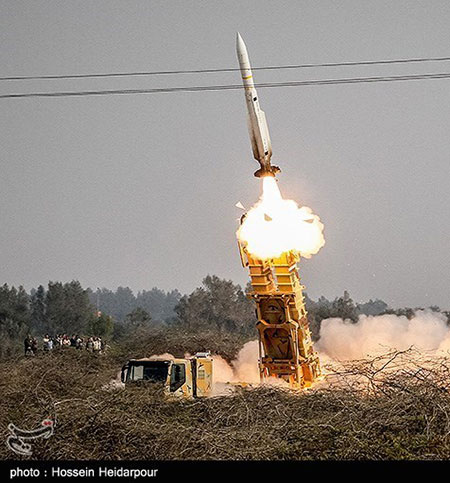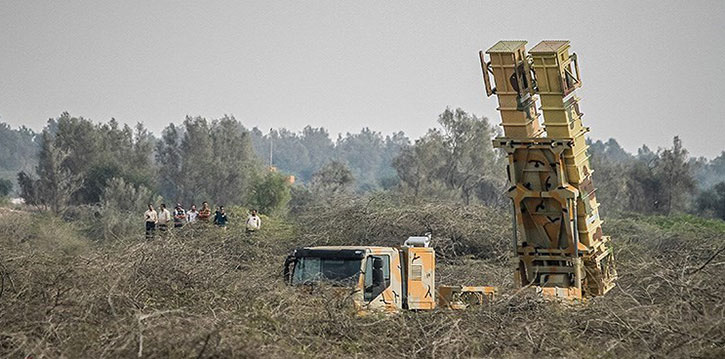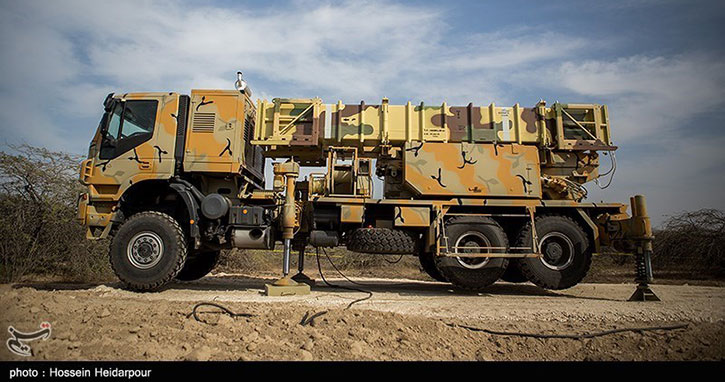
Iran’s Air Defense employed an upgraded version of the locally-made Sayyad-3 high-altitude air-defense missile yesterday. According to the Iranian news agency Tasnim, this was the first operational deployment of the missile, part of a large-scale exercise known as ‘Defenders of Velayat Skies 7’, taking place in Southern Iran this week. The annual exercise spans an area of nearly half a million square kilometers in the provinces of Hormozgan, Bushehr and Khuzestan.
The Sayyad-3 high altitude interceptor is operated as part of the Talash air defense missile system which also employs the Sayyad-2 interceptor variant against targets flying at medium altitude. This system intercept targets at ranges up to 150 km and is effective at high altitude. It can track 30 targets and engage 12 of them simultaneously. The system is integrated into the early warning radars operating at the strategic level to maintain a situational picture of the entire airspace, and employs a locally manufactured fire control radar known as Ofoq.
The system gradually replaces the S-200 missiles that exclusively provided high-altitude air-defense until the introduction of the Russian supplied S-300 air defense systems in 2016. Iran is also developing an extended range version known as Sayyad-4, for the Bavar 373 air defense system locally developed as an alternative to the S-300.





















